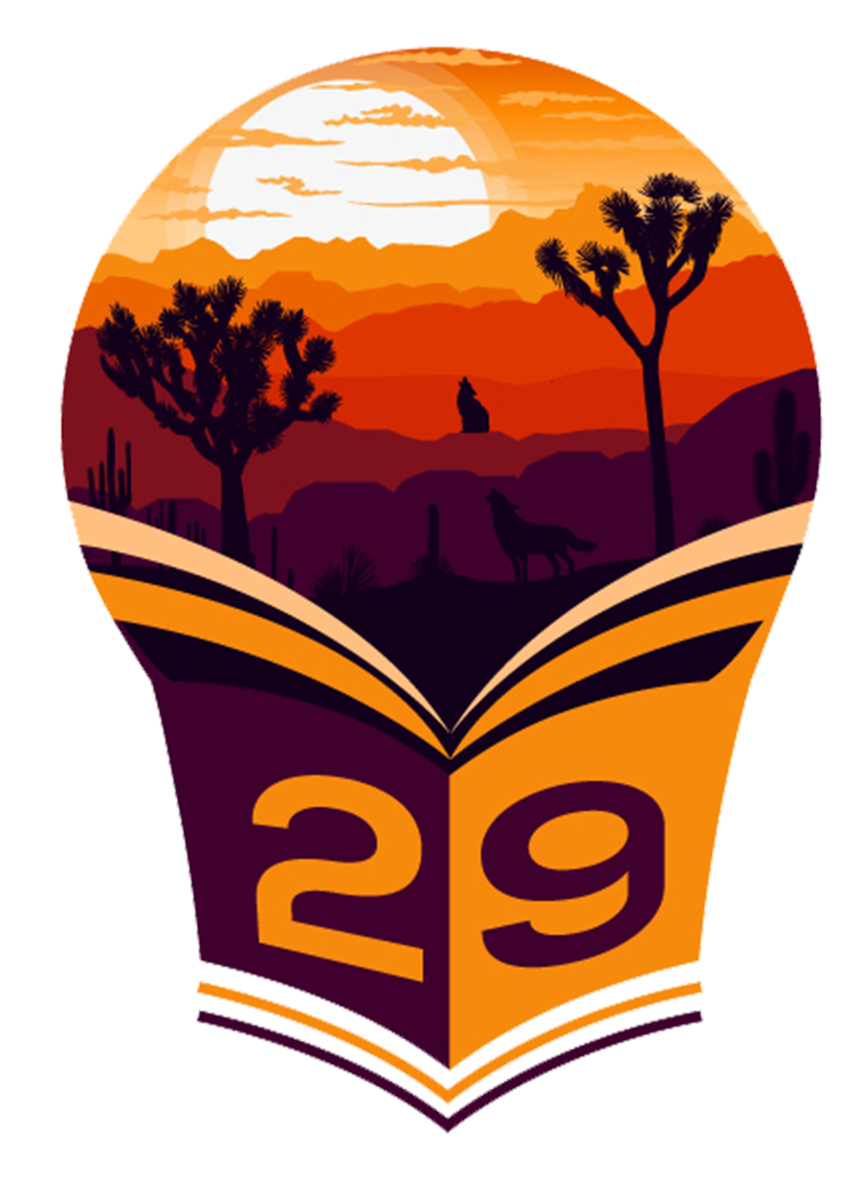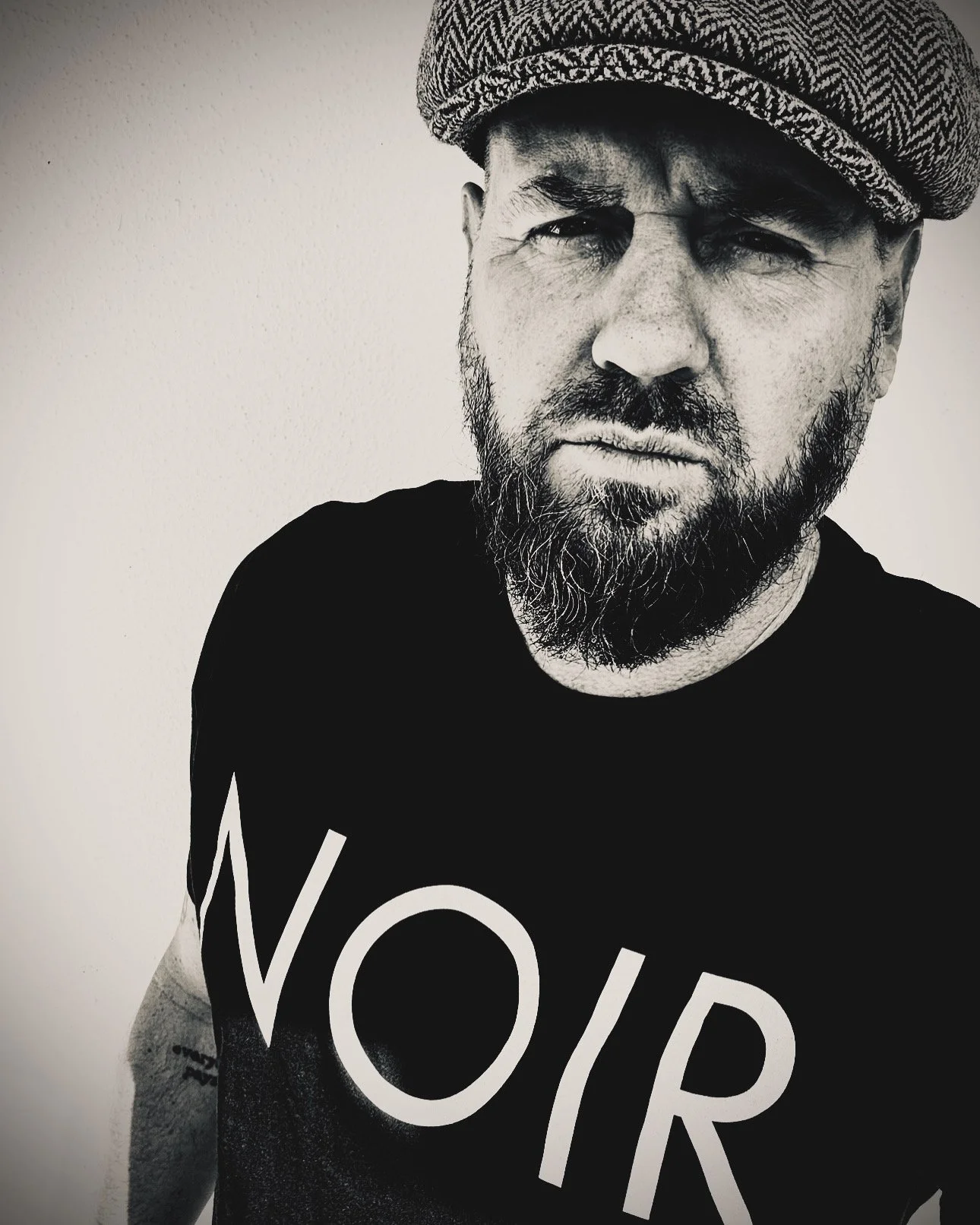guest author spotlight: brian townsley
Award-winning writer, podcaster, and Executive Editor of Starlite Pulp, Brian Townsley joins us at the Twentynine Palms Book Festival to highlight the rising power of crime fiction.
Author of A Trunk Full of Zeroes and Outlaw Ballads, and a graduate of USC’s Professional Writing Program, Brian brings a sharp, poetic touch to modern noir. His work captures the desert’s allure, the shadows of Palm Springs in the 1950s, and the gray morality of unforgettable characters like Sonny Haynes.
This summer, Starlite Pulp will also reissue Daniel Pyne’s classic noir novel Twentynine Palms—all Starlite Pulp books are available at Desert General!
Palm Springs in the 1950s is a fascinating setting for noir fiction. What is it about this era and location that draws you to set Sonny Haynes’ stories there? How does the desert’s glamour and isolation influence the tone and characters of your work?
The initial Sonny Haynes book takes place in LA. I grew up in Los Angeles, and the Chandler/Marlowe books were big influences for me as well. I chose sites for the novel that I knew hadn’t been given much attention in early noir (Central Avenue, Gilmore Field, etc.) and used those as best I was able. But that’s a part of the issue, right? Chandler—and Mosley, Cain, McCoy, Connelly, Ellroy, etc.—did/do a great job representing Los Angeles noir, so as much as I love it, I began thinking about other areas to mine.
Enter Palm Springs. There was the 90-mile rule in Hollywood at the time, so when actors needed a break, they were allowed a limited amount of space with which to vacation (in case they needed to be called to the set). Therefore, Palm Springs, which is 80+ miles from LA, became a hot spot. So, you’ve got the Hollywood crowd, and also a mob presence there—but PS was seen as a ‘neutral’ site, since gangsters from all over vacationed with their families there (remember the whole ‘no women or kids’ rule?). You also have a burgeoning gay community there, and the classic ‘modernist’ architectural aesthetic. It just seemed like a natural fit, and I’m having a blast with it.
Given your background as a poet, how does that experience shape your approach to writing noir fiction? Do you find that the economy of language in poetry naturally lends itself to crafting the terse, punchy dialogue often found in pulp fiction?
I absolutely do. Noir tends to be pretty spare, and poetry certainly is as well—however, I have been told my noir is too ‘literary’ at times by editors (a complaint I’m still a bit perplexed by), and it’s happened more than once, so maybe noir purists are looking for something else. Either way, noir has a certain claustrophobia to it—the shadows, the constructs of the city, the poor decisions and thus the situations the characters find themselves in, all lead to a tightness and economy of prose. Poetry certainly prepared me for that. That, and a whole lot of reading noir and detective fiction.
Sonny Haynes is a fixer navigating the dark underbelly of Palm Springs in the 1950s. What makes him such a compelling character for you to write? Do you draw inspiration from real-life figures or classic noir archetypes when developing his world?
Great question. First off, I see Sonny as a ‘fixer’, as you mentioned, and that really wasn’t an idea mentioned until recently, but it’s been going on forever. He doesn’t own a PI license, nor does he want to—or, honestly need to—as an ex-homicide dick from LA who is working as a resident investigator for the Starlite Hotel & Resort in Palm Springs.
But, here’s the thing: look at the great literary detectives—Marlowe, Spade, Easy Rawlins, Lew Archer, Travis McGee, Dave Robicheaux, and the list goes on and on, the detectives themselves are good men trying to do the right thing. But some of the sidekicks in those series—Mouse in the Rawlins books, and Clete Purcell in the Robicheaux books, for example, are very clearly the Doc Holliday’s as opposed to the Wyatt Earp protagonists. And I’ll be honest. I just thought, screw that: let’s make Doc/Mouse/Clete the main character. Let’s roll with that. So, Sonny is not meant in any way to be the good guy. He’s a guy who will do what’s necessary to protect his adopted daughter and the world he’s found himself in. Does he do the right thing? Sure. When it’s convenient. And that is an amazing character to write.
You mentioned growing up surrounded by stories from your family’s work in Hollywood, especially in the Western genre. How much of that insider knowledge, including the rumors and legends from those sets, finds its way into your writing?
Yeah, so I was surrounded by folks in my family who worked in the industry. My grandpa was constantly on location as a special effects guy, and he worked with Wayne, Sinatra, Mitchum, and many others. My dad was a scenic artist, so he was working behind the scenes, and one of my uncle’s was an actor and worked on numerous westerns. And yeah, I heard some stories. Who knows what’s true—stories are what they are, but I definitely grew up with them.
How it’s worked its way in, I’m not sure, but I can honestly tell you that it has helped my understanding of LA overall—most people seem to think that everyone comes to LA for fame and nobody actually grows up there. Well, I did. And it IS a weird experience, because you know so many of the waiters/baristas and other folks you meet are actually just waiting to drop you their head shots. Which is weird. But it also surrounds you—my parents threw parties, were known for them, and so we’d have actors and producers and dancers and whomever else coming through all the time. I get that that’s bizarre for a lot of folks, but for me it was just a regular thing. So, I’m sure that impacts my writing.
I’ve written numerous Sonny Haynes stories where he has to deal with/protect/confront actors at a hotel or a set, and yeah, I’m sure my past has something to do with that.
Your work spans genres—from Weird West to noir fiction and beyond. How do you balance the gritty realism of noir with the often surreal or strange elements found in the Westerns and horror themes you incorporate? What’s your process for blending these influences while staying true to the pulp fiction tradition?
Well, as I mentioned earlier, writing noir has a certain claustrophobia to it—and that’s not a bad thing, it seems to help the genre. I get it. But I see Westerns in an opposite light—while things in noir are black and white and in shadow, Westerns are wide open, both linguistically and in the story sense. There is nothing there, as times, but the landscape and the flora and the clink of the harness on your horse. You may not see another individual for days. So, they are opposites in many ways.
But here’s the thing: I write noir, and I love it. I write westerns, and love those as well. But while I grew up with Chandler, I also grew up with King, and Weird Tales, and Creepshow, and The Twilight Zone. So, that’s what we aim to do at Starlite Pulp. Publish THAT. The stuff that makes your hair raise and makes you uncomfortable. For example, my newest story in the next Review (#6) is a western horror tale that has hints of Lovecraft in it.
Funny part is, many westerns are mysteries an most noir yarns are westerns. So, it’s really all in the vision and the execution. But it’s so much fun.

